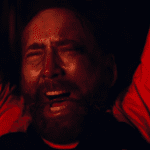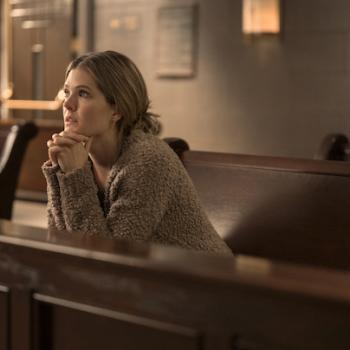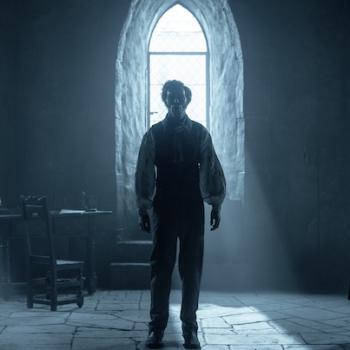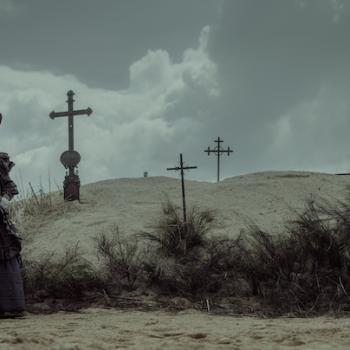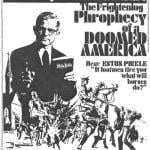
Sins of the Father
The Nun takes place well before the Catholic sex abuse scandal began to be discussed. But I wonder whether the movie made its own veiled allusion to the scandal through Father Burke’s backstory.
I should be clear: Father Burke is in no way called out as a lecherous, wayward priest. But we do hear an interesting interaction between he and Vatican officials. He accuses the Holy See of keeping secrets. “We’re not the ones with a secret, father,” the officials counter. Secrets seem to be a serious issue, then, both then and now.
We later learn Burke’s secret. The priest led an exorcism gone horribly wrong involving a 10-year-old boy he thought was possessed. He admits that perhaps he was “overzealous” during the exorcism, and in flashback we see him tenderly cradle the bloodied boy, post-exorcism, in his arms. We learn that, days later, the child died from his injuries.
We’re told the boy was having visions not unlike Irene’s. Was he possessed, as Burke believed? Divinely gifted? Or was he just a scared little kid? “It’s a puzzle,” a guilt-stricken Burke says.
But once the secret’s out, Burke gets very little rest. Throughout the rest of his stay at the abbey, he’s haunted by the boy—accusing the priest, asking why he did what he did to him. A snake sometimes slithers out of the child’s mouth, and at one point the serpent attacks the priest—biting him in the eye.
All this is a very interesting sideshow, but seems ancillary to the story itself: Why is it in here? And then I think about Valak again in his role as the “defiler,” a demon who profanes the good and the holy with its corruptive nature.
Those themes are obviously huge issues within the ongoing Catholic sex scandal—how men of God betrayed their vows, defiled the innocent and, in so doing, profaned the faith. I’ve talked with a few of the scandal’s victims. Some blame not just the priests who molested them, not just the system that allowed it to happen, but Christianity itself. (Keep in mind, many priests told their victims that the molestation was God’s will.) The children in their care trusted these priests. Those priests took that trust and twisted it, using it to kill their innocence and, in many cases, their faith.
The snake’s interesting, too. Since the Garden of Eden, the slithering serpent has been used as a symbol of temptation. And then there’s the fact that the snake attacks the priest’s eye: “If your eye causes you to sin, tear it out and throw it away,” we hear Jesus tell us in Matthew 5:29.
Again, Father Burke is not portrayed as a molesting priest. But is it possible—with all these snakes and secrets and defiling demons in play—that through his backstory, Burke serves as a modern-day proxy for the Catholic Church itself? Well-meaning, but burdened with dark secrets and, perhaps, deserving of the punishment it’s receiving from its victims?



